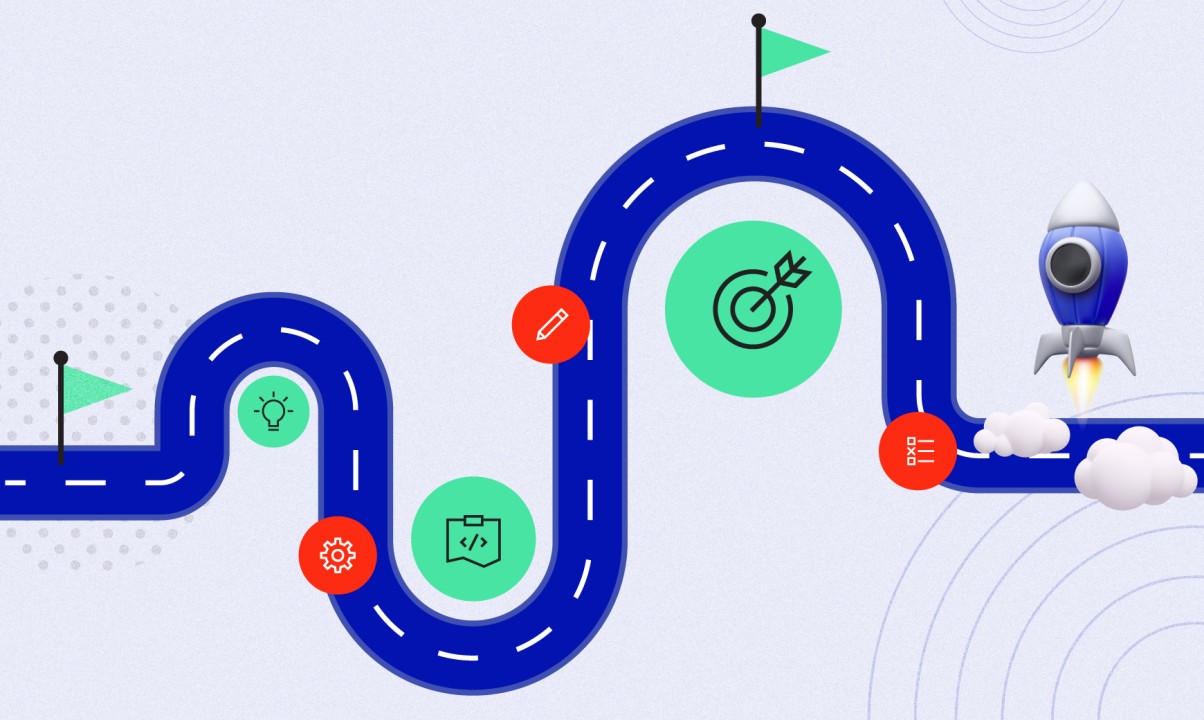Say goodbye to the era of feature factories and never-ending lists dictating “what’s next to build.” Today’s forward-thinking product leaders are breaking free from convention and adopting a groundbreaking strategy: theme-based roadmapping. This shift isn’t merely a change in presentation; it represents a fundamental reimagining of how we conceptualize and provide value to our customers.
Shifting from Features to Outcomes:
Conventional roadmaps often revolve around a plethora of features, an exhaustive compilation of functionalities promising elusive benefits. However, features are essentially tools, and customers aren’t purchasing tools – they’re investing in outcomes. They envision heightened productivity, streamlined workflows, and content clients. Theme-based roadmapping takes a different approach, commencing with these desired outcomes and constructing a narrative around them.
Themes: Beyond Mere Buzzwords:
Themes aren’t mere trendy labels. They serve as overarching narratives intricately linked to your product vision. They encapsulate a cohesive set of initiatives, features, and even experiments that all align with a common objective: delivering a specific, customer-centric outcome.
Visualizing it as Building a Bridge:
- Outcomes are the end points: the customer’s “before” and “after.”
- Themes are the bridge itself: the strategic path connecting those points.
- Initiatives, features, and experiments are the stepping stones: concrete actions propelling you toward your destination.
Advantages of Themes:
- Pinpoint Focus: Themes compel you to prioritize relentlessly, rejecting features that don’t contribute to the larger picture. This heightened focus results in more streamlined, impactful roadmaps.
- Customer Harmony: By commencing with desired outcomes, every decision is grounded in customer needs, ensuring tangible value. It serves as the ultimate empathy exercise for your product team.
- Agility Triumphs: Themes are adaptable, capable of adjusting to market shifts, new insights, and customer feedback. They are resilient narratives, not inflexible blueprints.
- Motivation Matters: Themes tell a story, a collective journey toward a brighter future for your customers. This narrative inspires and motivates your team, instilling a sense of purpose and ownership.
Constructing Your Theme-Based Roadmap:
- Conduct In-Depth Research: Immerse yourself in customer data, understanding their pain points and aspirations. Become their ethnographers, their anthropologists.
- Theme Development: Identify impactful customer outcomes and craft compelling narratives around them. These themes should be ambitious yet attainable.
- Plan the Journey: Break down themes into actionable initiatives, prioritizing based on impact and feasibility. Begin with experiments, prototypes, and small victories.
- Communicate, Iterate, Celebrate: Share your roadmap with stakeholders, recognizing that it’s a dynamic document. Embrace feedback, adapt to insights, and celebrate progress toward shared goals.
Theme-based roadmapping isn’t a passing trend; it signifies a paradigm shift. It transcends the feature checklist, delving into the minds and hearts of your customers. It’s about constructing bridges, not merely adding features, and ultimately, it’s about creating products that make a difference, products that revolutionize lives.
Ready to break free from feature overload and embrace the transformative influence of themes? The journey to customer-centricity awaits.
Bonus Tips:
- Keep your themes concise and memorable. Think “productivity powerhouse” instead of “task management overhaul.”
- Visualize your roadmap! Utilize diagrams, timelines, and storyboards to breathe life into your themes.
- Celebrate victories, both big and small. Remember, your roadmap is a shared adventure, not a solitary expedition.
With theme-based roadmapping, you’re not just developing products; you’re fostering relationships. Now, that’s a revolution worth pursuing.




